Simulated and Immersive Environments 2/4 (2011): A Pattern Approach to Action Game Design
Media, models, objects, processes and activities of any complexity are structured by patterns. This has long been recognized and used for analysis. In this paper we explored the question if patterns can be used generatively to inform creative processes for the design of interactive systems. The idea of using patterns in this way arguably originated in architecture, but it appears to gain substantial influence in other areas in the last decade, e.g. in software design. The systems we were looking at were computer games, and the patterns were interaction patterns. The focus was on game play and interaction between players, not e.g. on graphics, physics, modelling or installations. As examples and starting point we used 8-bit action games. We discussed theory, identified, described and catalogued our own set of patterns and used them to design games. Initially, we toyed around with Pong (individually) and created multiplayer Trons that are really working (in small teams). Then we used our patterns to produce several designs for a final game, voted for a design, and realized it (collectively). All games were implemented from scratch using C++ because they are time critical interactive systems, and to have control over the full range of possibilities. We attempted to make clever little games that are not only copying and cloning what has been done already but combine patterns in exciting new ways.
The concepts of Simulated and Immersive Environments 2 and 4 were identical, but year 3 students were expected to possess and demonstrate a greater range of critical and reflective thinking, medial and theoretical awareness, practical ability and own initiative than year 2 students.
Super Bush! Chronicles (see pictures below) is a single-player jump n' run game. It is about a panda bear defending its jungle against fierce goblins who want to build a town at this location to 'support their gambling needs' (Design Document). The game includes a number of patterns from our pattern language: SOMETHING TO DO FOR THE PLAYER, ACTION CONSEQUENCES, IN-GAME OBJECTIVES, REWARD FOR RISK (score, goodies), CHARACTER (panda bear), MORALITY (helping a good cause, defending the forest, liberating caged jungle animals), SPECIAL ABILITIES (jumping very high and bamboo stick kendo, eat weapon upgrades (bamboo stick) to boost health), ENEMIES (goblins with axes, chainsaws or guns, boss goblins in construction vehicles, i.e. bulldozers), LIMITED LIVES (three), HEALTH BAR (for player and goblins), MANAGE CHARACTER, ITEMS TO COLLECT (nuts as currency), SHOP (buy armour and weapon upgrades), COMPETITION BETWEEN PLAYERS (through saved hiscores), GAME GETS HARDER (increasing number of enemies and traps), TRAPs, A SETTING FOR THE GAME (conflict over natural resources) and LEVEL THEMES (five levels with slightly different themes).
We recorded our own sound and drew original graphics. The game is controlled with the keyboard. It was implemented using C++ and the SDL library.
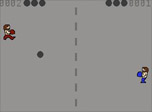
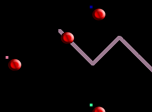
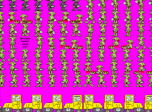
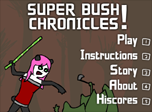
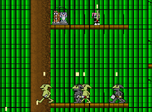
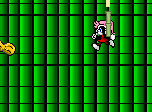
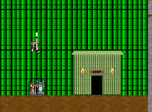
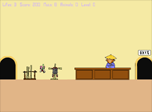
Daniel Cermak-Sassenrath. Simulated and Immersive Environments 2/4: A Pattern Approach to Action Game Design, Course, Auckland University of Technology, Auckland, 2011, Semester 2.
 Super Bush! Chronicles, playable demo (first level), download for Windows, 5.4MB Super Bush! Chronicles, playable demo (first level), download for Windows, 5.4MB
|